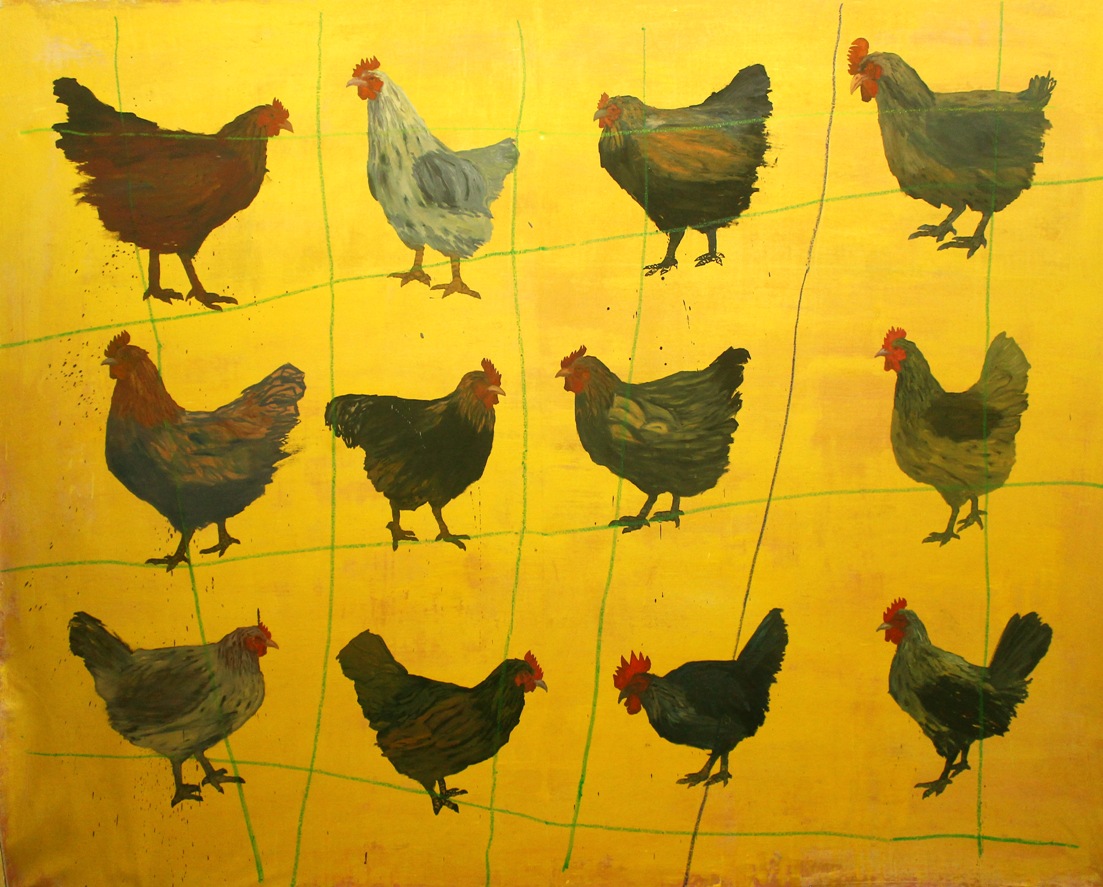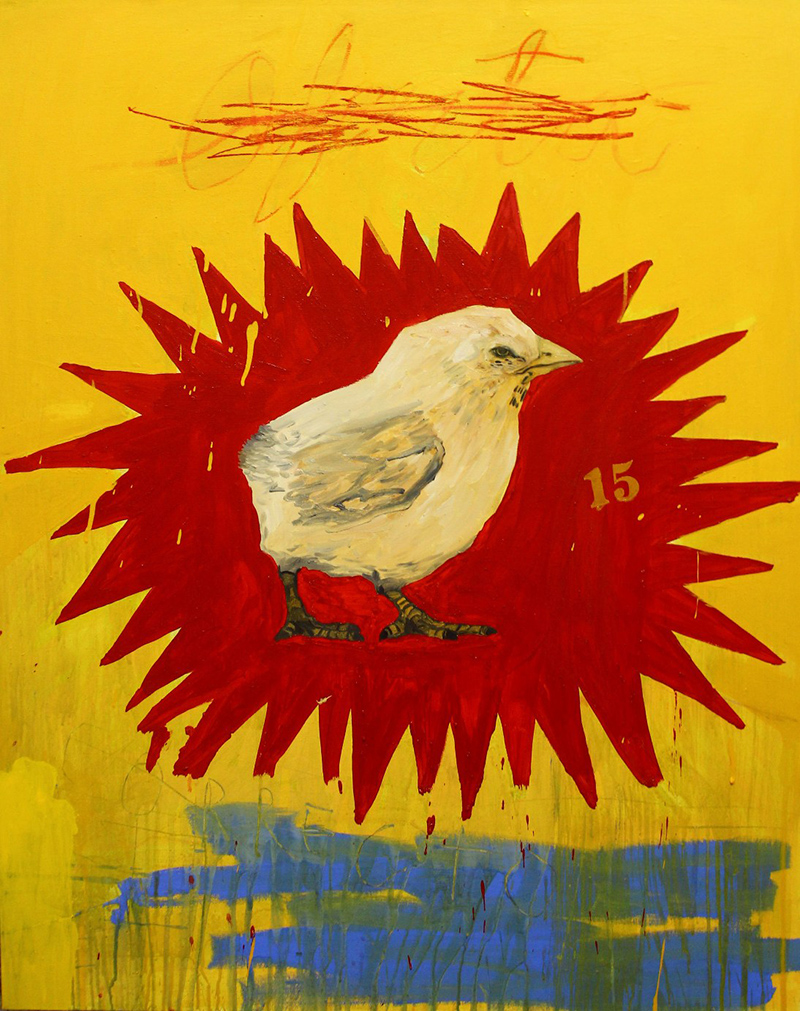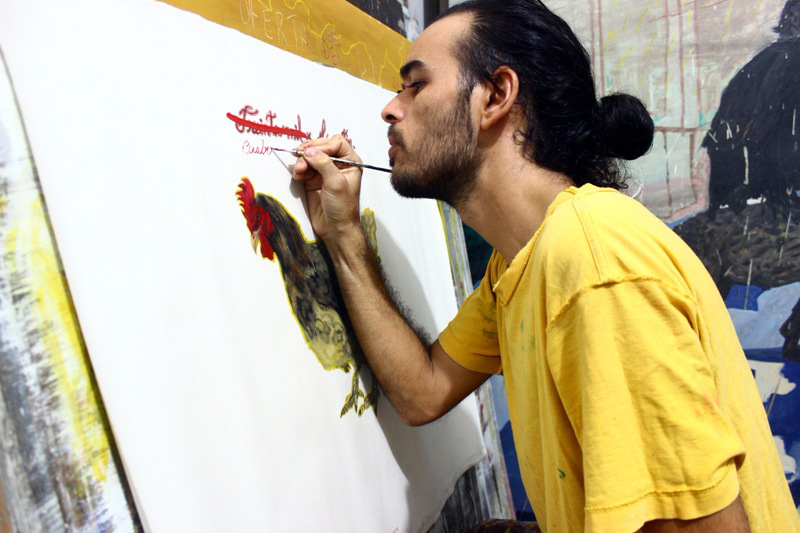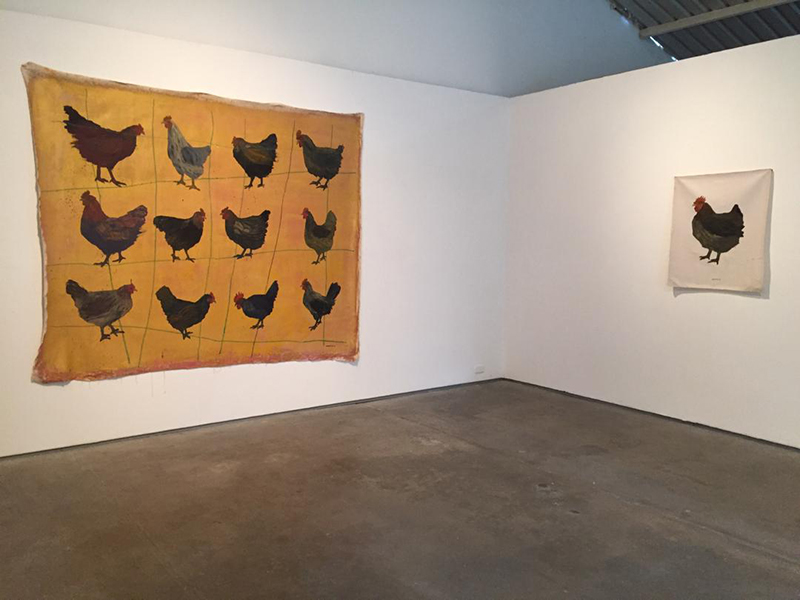I think it’s just about being an artist. As says Charles Saatchi says, “Being a good artist is the hardest work you can choose and you have to be a little crazy to take on that destiny.”
~ Alvaro Paz on being an artist.

El Dron. 250 x 160 cms. Oleo sobre tela. 2018
Take us to the beginning of your story. How did your tryst with art begin?
I would say I met the art world by coincidence, without knowing anything about art. I didn’t know that a career like this one could exist, what was art about or that it was something you could study. A friend told me about a career in art career when we were about to start college. We searched for information and gave the admission tests. We got in and studied together in 2004. I like to draw since I was a kid, but I didn’t know anything about art, just the fundamentals. Thanks to my teachers during my time as an art student I learned everything I needed to know.
I think that an artist is a communicator, not a decorator. An artist is a creator of ideas, through which information is also disseminated. An artist must be the voice of her or his time.

Medio. 200x240cms. Mixta sobre tela. 2019.
How do you deal with the conceptual difficulty and uncertainty of creating work?
There aren’t difficulties. Everything emerges from my concept, so there’s always something to do.
Let’s talk about the evolution of your practice over the years. Tell us about your commitment to your current medium. Well, my foundation is drawing, so I would say it has taken its place and then it led to painting, to the point that I use only oils. But I believe that the technique is only the medium to say something. My mantra is to convey the idea via the technique.
What is your experience of the power of formative collaborations? Which residency, curator or gallery helped you along on your artistic journey?
A while ago I won a prize at the Graphic Art Biennale. It comprised a workshop of graphic arts at a residency in Caracas. I went there for a month. There was an activity called Velada in Saint Lucia. Year after year we would experiment inside the space. It was very interesting.

Oferta. 100 x 80 cms. Mixta sobre tela. 2018
Let’s talk about your framework, references and process. What inspires you?
My context, the people around me, their behaviour, and my country’s economy.
What are you looking for when you look other artist´s work? Which shows, performances and experiences have shaped your own creative process? Who are your maestros? Whose journey would you want to read about?
I like to see Mark Rothko’s artwork, besides Robert Rauschenberg and Vladimir Velickovich. But generally speaking I like artists who talk about themselves and their space in their artwork. For example Lucian Freud and his daily life, as well as Leon Golub and the way he articulates about violence.
How do you balance art and life?
Both are the same thing. There are no boundaries.
What was your first sale? Do you handle the commercials yourself or is it outsourced to a gallery or an agent
My first buyer was a teacher from my university. She liked a drawing I did and after classes she took me to the bank and paid me. I remember it wasn’t much. I bought candies and things like that. Then eight years later, I started selling art to galleries and, eventually, on my own.

Let’s talk about the duality. Artist often experience contrasting motivations between the commercial and the creative. How do you strike a balance?
Money has never been my motivation for the creation of any painting. I always work without thinking about selling. It’s good to know that though I don’t do decorative pieces, there is still a commercial interest.
How does your interaction with a curator, gallery or client evolve?
It depends on the person I’m talking to. It’s never the same. It can also be dictated by the project I am involved in.
Are you more of a studio artist or naturally collaborative by nature? How do you feel about commissions?
I have done both. I am at my studio very often, but I have also been involved with artists’ projects. I do well with commissions. People who have asked for a piece understand my process and had given me the creative freedom to make them.

A view of Rebusque, Solo Show. 2019.
How does your audience interact and react to your work? What is that one thing you wished people would ask you but never do?
I believe my work has had good reception, as well positive criticism in several scenarios. That motivates me to not change it and keep my work true to what I believe in. As for the question that I never asked, well, better that way.
What are you working on now? What’s coming next season?
I have been developing a series of paintings called Gallineros using the iconography of the chicken, rooster and animals. I use them as a metaphor to think about an economic reality in my country. As food, they are a luxury, almost unattainable. This idea walked into me approximately three years ago. Now, I have tried to show those ideas not only with painting, but also with a photography proposal that ended in a series of triptychs that I plan to show when the idea and the results are completed.
Before you go – you might like to browse our Artist Interviews. Interviews of artists and outliers on how to be an artist. Contemporary artists on the source of their creative inspiration.











Add Comment